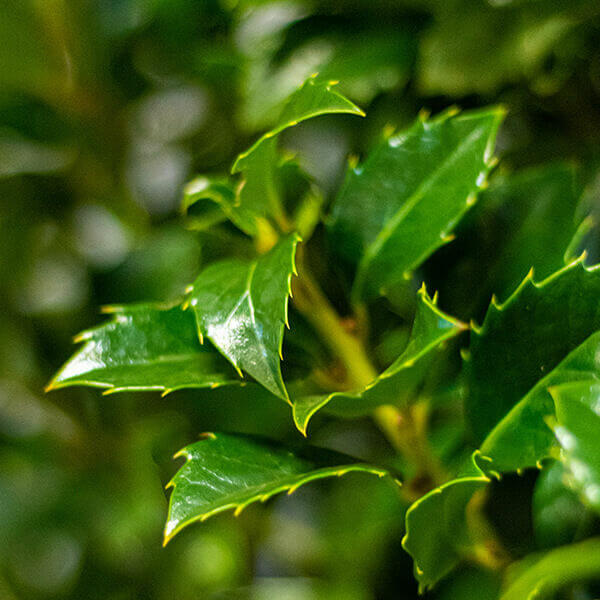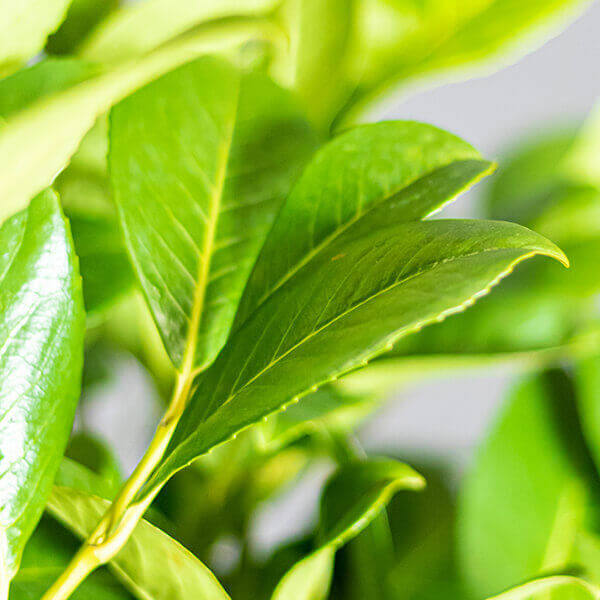Best Hedge Plants For Hedges And Screens
Best Hedge Plants For Hedges And Screens
Blog Article
Best Hedging Plants For Quick Results
Enhance your garden's allure with rich hedge ranges such as Yew (Taxus), Thuja, Laurel, Photinia, and Bamboo, celebrated for their structural stability and environmental advantages.
Yew and Thuja offer evergreen coverage and winter season resilience, while Laurel offers fast development and broad, fragrant leaves.
Photinia includes seasonal beauty with its dynamic red foliage, and Bamboo provides a low-maintenance, serene ambiance.
These hedges enhance air quality, reduce noise, and produce tranquil, personal spaces.
Proper planting, spacing, and upkeep ensure vigorous growth and eco-friendly harmony.
Check out how these rich ranges can elevate your garden's charm and well-being.
Key Takeaways
Change Your Garden With Lush Hedge Ranges
- Select Yew for its thick, evergreen growth and exceptional durability.
- Go with Laurel for its fast growth and broad leaves, guaranteeing quick privacy.
- Select Photinia for its lively seasonal foliage, which turns a striking dark red.
- Make use of Bamboo for a low-maintenance, winter-hardy hedge with visual appeal.
- Area plants 2-3 per meter and prune regularly for optimal growth and health.
Popular Hedge Plants
When transforming a garden with lush hedge varieties, it's necessary to think about popular hedge plants such as Yew, Thuja, Laurel, and Photinia due to their special attributes and advantages.
Yew (Taxus) is extremely esteemed for its durability and thick, green development, making it a prime option for withstanding landscapes.
Thuja is kept in mind for its evergreen foliage and robust winter durability.
Photinia adds seasonal vibrancy with red leaves that darken in time, creating dynamic visual appeal.
Laurel uses fast growth and fragrant, broad leaves, ideal for quick personal privacy.
In Addition, Bamboo is an exceptional option for ambiance, providing a low-maintenance, winter-hardy option that enhances the garden's visual with its sophisticated, swaying walking sticks.
These selections deal with a variety of horticultural needs and preferences.
Benefits of Garden Hedges
Garden hedges provide a plethora of advantages, making them an important addition to any landscape. These natural barriers are affordable to execute and offer significant wind security, improving air circulation and adding to noise reduction. The thick foliage of hedges like Thuja and Beech ensures personal privacy by blocking visibility, developing a remote and tranquil environment.
Hedges also play a crucial function in microclimate policy, providing a steady environment that fosters plant development and minimizes temperature level fluctuations. Their detailed leaf structures filter contaminants, improving air quality and adding to a healthier garden community.
Moreover, hedges stand out in sound reduction, soaking up and deflecting sound waves to lower ambient sound levels. This double performance of offering both acoustic and visual privacy boosts the overall serenity and visual appeal of any garden.
Planting and Maintenance Tips
For an effective hedge, precise preparation of the planting location is crucial. Guarantee the soil has correct pH and drainage to support strong root development.
Area the plants properly for the chosen species. Water the hedge regularly throughout its initial growth stage, changing as required with seasonal changes.
Execute a methodical bug control and disease prevention technique, utilizing chemical or natural treatments when necessary. Regularly inspect for aphids, mites, and fungal infections.
Apply mulch to keep wetness and reduce weeds. Seasonal pruning promotes thick development and air circulation, essential for plant health.
Following these guidelines will help you cultivate a dynamic, well-kept hedge that improves the charm of your garden.
Spacing and Cutting Standards
Spacing and Cutting Standards
Appropriate spacing and cutting are important for cultivating healthy, aesthetically appealing hedges. Sufficient spacing makes sure each plant gets adequate nutrients, light, and airflow.
Follow these guidelines for ideal hedge maintenance:
- Spacing: Position hedge plants 2-3 plants per meter to encourage robust growth.
- Pruning Techniques: Regular pruning is essential for keeping wanted hedge height and shape. Cut new growth in summer and cut down older wood during winter season.
- Seasonal Care: Adjust trimming schedules and approaches according to seasonal requirements to guarantee plant health.
- Hedge Height: Routinely screen and trim to maintain the desired hedge height and attain consistent looks.
Following these steps will guarantee your hedge prospers, enhancing both the appeal and functionality of your garden.
Picking the Right Hedge
Selecting the Right Hedge
Selecting the proper hedge involves examining aspects such as mature height, foliage density, and environmental strength. Effective hedge plant selection needs understanding each types' growth characteristics and site-specific flexibility.
For example, Yew (Taxus) uses outstanding durability and thick growth, while Thuja is noteworthy for its winter strength. Additionally, thinking about upkeep requirements is crucial; fast-growing types like Laurel or Privet demand routine cutting, whereas low-maintenance options like Bamboo or Ivy may be preferable for those looking for minimal maintenance.
Ecological elements such as soil type, light schedule, and moisture conditions must also direct the choice process. This cautious technique ensures the selected hedges will grow, providing both functional and visual advantages to the garden landscape.
Delivery and Planting Recommendations
To guarantee your hedge plants thrive, they must be provided by specialized couriers and planted quickly upon arrival.
Follow these necessary steps for successful planting:
- Soil Preparation: Enhance the soil with raw material to improve drainage and nutrient content.
- Planting Depth: Produce a trench two times the width and equivalent to the depth of the root ball.
- Watering Strategies: Water thoroughly after planting, keeping the soil consistently damp but not filled.
- Mulching: Use a layer of mulch to retain moisture and suppress weeds.
Client Support and Service
Provided the important function of prompt help in horticultural pursuits, our consumer assistance group is readily available six days a week through telephone, email, and social media to offer expert advice and swiftly deal with any issues. Their dedication to quick reaction times makes sure consumer fulfillment by resolving queries related to plant health, optimal planting approaches, and upkeep schedules.

Availability
-----------------
Within 24 hr
This comprehensive support system, strengthened by an excellent 9.3/ 10 consumer ranking, highlights our dedication to enhancing the gardening experience for every client.
Frequently Asked Questions
For How Long Does It Take for Hedge Plants to Establish?
Hedge plants typically require one to three years to become fully established, with the precise duration varying by species and growing conditions.
Effective care throughout this important duration is necessary for robust development. Constant watering, alert weed control, and appropriate fertilizer application are pivotal in promoting strong root development.
For example, fast-growing species like Laurel might develop faster, while slower-growing ranges such as Yew might take longer. Diligent upkeep accelerates the establishment procedure, leading to thick and healthy hedges.
What Are the Best Hedge Plants for Privacy?
The concern of the very best hedge plants for privacy involves examining evergreen and deciduous choices.
Evergreen hedges like Thuja, Laurel, and Cypress offer year-round coverage, making sure continuous privacy.
On the other hand, deciduous hedges such as Beech provide seasonal privacy, shedding leaves in cooler months.
Secret maintenance pointers for personal privacy hedges include regular cutting, fertilizing in spring, and appropriate spacing-- typically 2 to 3 plants per meter.
In addition, consistent watering and thorough weed removal are crucial for promoting healthy, thick growth.
Can Hedge Plants Bring In Wildlife to My Garden?
Yes, hedge plants can draw in wildlife to your garden by supplying vital benefits like shelter, food, and nesting websites, thereby boosting local biodiversity. For example, yew, holly, and laurel are outstanding for bring in birds, while ivy supports a variety of pests.
Nevertheless, it is very important to keep in mind that there are some drawbacks, such as increased upkeep to manage insects and routine upkeep. Carefully picking and maintaining hedge ranges can assist stabilize these benefits and downsides, eventually cultivating a vibrant and sustainable environment in your garden.
Are There Any Flowering Hedge Plants Available?
Yes, there are flowering hedge plants readily available that can enhance the beauty of your garden.
For instance, Elaeagnus, likewise called Olive Willow, produces fragrant white flowers in the fall, adding a touch of sophistication.
Photinia, another popular option, showcases vibrant red leaves that develop into an abundant green, developing a vibrant visual effect throughout the seasons.
To ensure these plants flourish, it's important to practice correct pruning techniques and seasonal maintenance, such as trimming new growth in the summertime and cutting down in the winter season.
These procedures will assist keep the health and visual appeal of your flowering hedges.
How Do I Prevent Pests in My Hedge Plants?
To prevent pests in hedge plants, employ natural pest control methods and preserve appropriate hedge care. Present beneficial bugs like ladybugs, which take advantage of hazardous insects, to produce a well balanced community.
Routinely examine your hedges for signs of invasion and immediately eliminate any affected parts to prevent the spread. Ensure the health of your hedges by using well balanced fertilizers and supplying sufficient water.
Use mulching to keep soil moisture and proper spacing to lower plant tension and promote robust development. These practices collectively help in minimizing bug concerns and preserving a healthy hedge.
Conclusion
In essence, choosing the ideal hedge ranges such as Yew, Thuja, and Laurel can transform any garden into a peaceful sanctuary. These plants offer year-round greenery, boost visual appeal, and offer useful benefits like noise decrease and wind security.
Proper planting strategies, accurate spacing, consistent watering, and seasonal cutting are crucial for ideal development.
Trusted delivery services and expert consumer support ensure a smooth experience from purchase to planting, making it simpler than ever to raise your outdoor area.
Garden read more hedges offer a wide variety of benefits, making them an important addition to any landscape. These natural barriers are affordable to implement and offer significant wind security, boosting air flow and contributing to sound reduction. The thick foliage of hedges like Thuja and Beech ensures personal privacy by blocking exposure, developing a remote and serene environment.

Pruning Methods: Regular pruning is necessary for keeping desired hedge height and shape. Cut brand-new growth in summer season and cut back older wood throughout winter.
Report this page